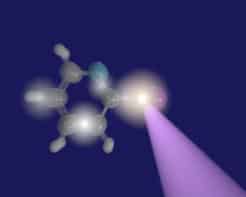
A two-legged molecular motor that “walks” in a single direction instead of wandering about randomly has been unveiled by researchers in the US. The DNA-based device could someday be used to assemble complex molecules, transport drugs within the body, or drive molecular machines of the future.
Current molecular walkers try to imitate the cellular motors actin and kinesin, which carry various cargoes from one place to another in biological cells.
However, until now, it has not been possible to make these molecules move in one particular direction along a track. This is because it is difficult to coordinate the movement of the motor’s legs so that they move in a synchronized way without the legs coming off the track. This also means that researchers must intervene each time the walker takes a step, to stimulate it to move.
Important step forward
“The walking device is autonomous and does not require any further intervention once set up,” said team leader Nadrian Seeman, who is at New York University. “It also only walks in one direction, which is an important step forward in nanotechnology because we expect future walkers like these to move cargo from one place to another.”
The new walker was conceived and designed by Tosan Omabegho of Harvard University and is a piece of DNA that contains a head-to-head linkage in the middle. This set-up ensures that the two legs in the device are synchronized. The device moves along a rigid track, also made of DNA, and is powered by two different fuel strands in solution, acting alternately. These fuel strands push the walker along in a ratchet-like motion.
The walker forms base pairs of DNA as it moves along the track. Seeman explains that the thermodynamic driving force behind the motor is that there are more base pairs formed after the device has taken a step than there were beforehand. This allows the walker and the fuel strands to act as catalysts in the system and supply the energy needed for movement. At the same time, the fuel strands push the walker along the track by first binding to the track and then releasing the walker’s legs, thus allowing it to take steps.
Shifting cargo
The researchers believe that demonstrating such coordinated molecular motion is an important step towards developing more complex and autonomous machines, made from DNA or other materials. They reckon that the device could be used to move cargo, such as molecules and drugs, for use in novel molecular machines and in biomedical applications. It might also move chemical groups into place to produce programmed polymers and other complex species. Such transport will be as important to molecular machinery of the future as trucks and conveyor belts are for factories today.
The team now plans to analyse the detailed kinetics of the walker. “We will also try to incorporate it into a more complex synthetic schemed and possibly use a different energy source,” revealed Seeman.
The work was reported in Science .



